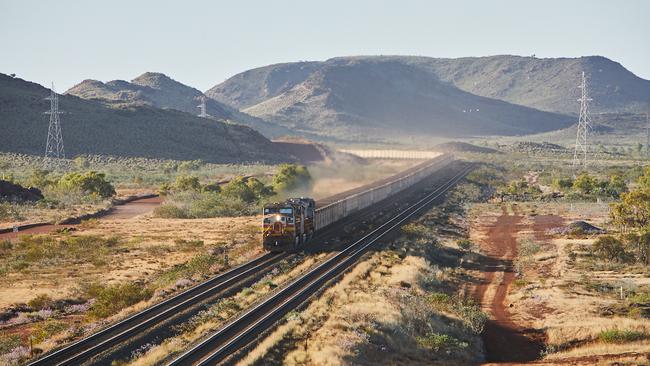Rio Tinto flags iron ore review
The mining giant, led by Jakob Stausholm, has had to export more lower grade iron ore material, sparking a review of its product mix.

Rio Tinto has flagged a review of its iron ore product mix as it grapples with approval delays that have forced it to export more lower grade material from the West Australian mines that provide the lion’s share of earnings.
The mining giant maintains the Chinese economy is in transition and will become more reliant on commodities needed in advanced manufacturing, including electric vehicle making and battery storage, in a justification of its near $10 billion deal to acquire Arcadium Lithium.
Rio sees a continued decline in the Chinese property market with ramifications for Australia’s iron ore industry amid changes in commodity demand.
It said China’s economic recovery had been uneven, with no turnaround in the property sector that has fuelled iron ore demand despite additional government stimulus.
The lower grade ore, which sells at a discount to the benchmark product with 62 per cent iron content, made up almost a fifth of the 84.5 million tonnes Rio shipped from WA in the September quarter. Rio did not disclose the price for the lower grade product.
Rio is also battling to keep a lid on production costs at the Pilbara mines, which are now at the higher end of guidance. It blamed higher than expected inflation.
“We are reviewing our future product strategy, having regard to customer requirements and available ore grades,” Rio said in its third quarter results released on Wednesday.

Citi analysts said Rio was already under fire from investors for offering an unnecessary full price for Arcadium and had followed this up with a disappointing September quarter report.
The lowlights included the raising of cost guidance for the Pilbara iron ore operations, continuing problems at the Kennecott copper mine, the impact of bush fires on its iron ore business in Canada and delays in Gladstone alumina getting back to full production.
Rio said it still expected to ship 323-338 million tonnes of iron ore from the Pilbara in 2024, but warned of higher volumes of lower grade ore until replacement mines came on-line.
“This guidance remains subject to the timing of approvals for planned mining areas and heritage clearances,” it said a day after warning the Albanese government it was treading a fine-line on new environmental protection laws.
Rio expects the new Western Range mine to start production next year, followed by extensions to existing operations at West Angeles, Hope Downs, Brockman and Nammuldi. The extensions all require environmental and indigenous heritage approvals.
The warning on the flagship operations in WA came as Rio confirmed the high-grade Simandou iron ore project in Guinea was on track to start production next year.
The Simfer mine at Simandou will build up to annual production of 60 million tonnes, with Rio’s share 27 million tonnes, by 2028.
The benchmark iron ore price fell 11 per cent from the June quarter to $US99 a tonne, with Rio noting a drop in supply from higher cost producers.
Chinese demand improved in September after an end to maintenance work at Chinese steel mills.
It is estimated about 150 million tonnes of Chinese property market demand has come out of the iron ore market in the past few years, with some of that offset by demand in manufacturing, particularly for infrastructure and equipment required in electrification.
Rio chief executive Jakob Stausholm said the Arcadium acquisition would add a “world-class lithium business alongside our leading aluminium and copper operations to supply materials needed for the energy transition”.
“This is aligned with our strategy and our disciplined capital allocation framework, increasing our exposure to a high-growth, attractive market at the right point in the cycle.”
Rio expects to be producing lithium from the first stage of its Rincon project in Argentina before the end of the year.

To join the conversation, please log in. Don't have an account? Register
Join the conversation, you are commenting as Logout